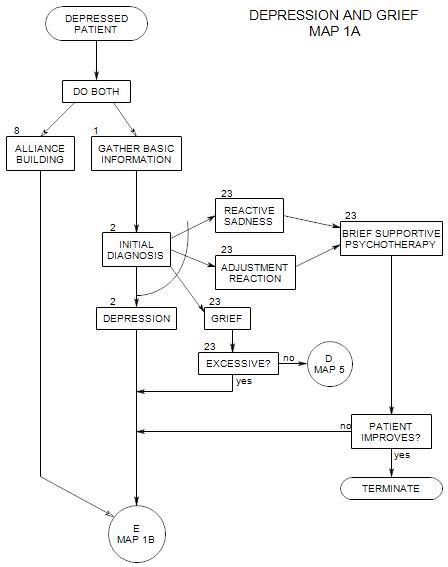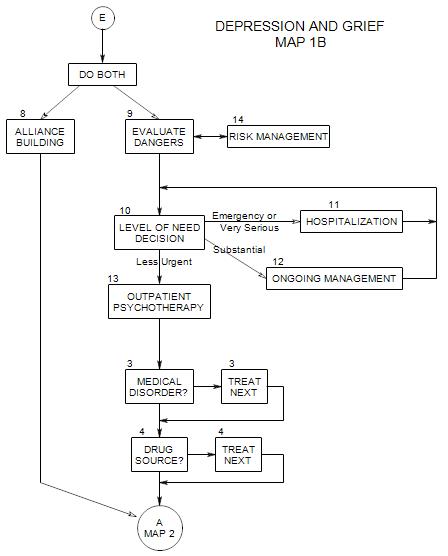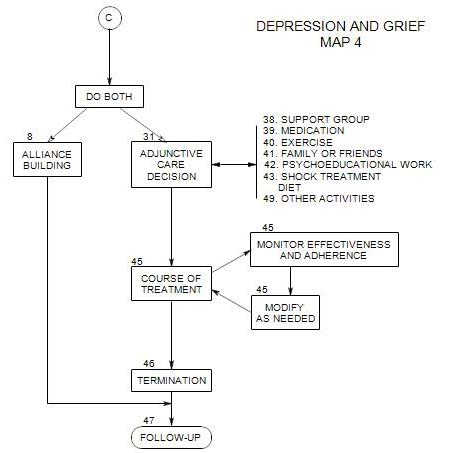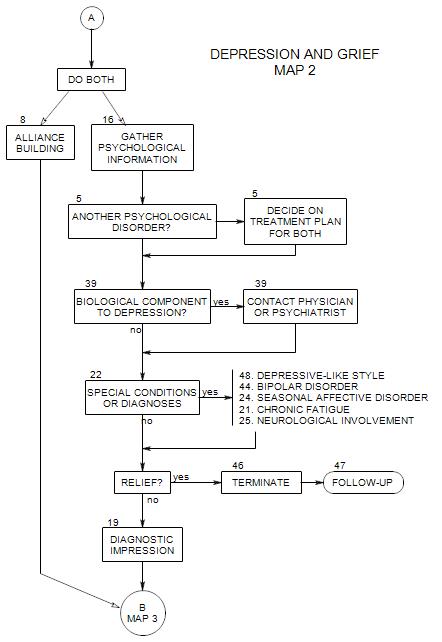
SECTIONS: 5 | 8 | 16 | 19 | 21 | 22 | 24 | 25 | 39 | 44 | 46 | 47 | 48
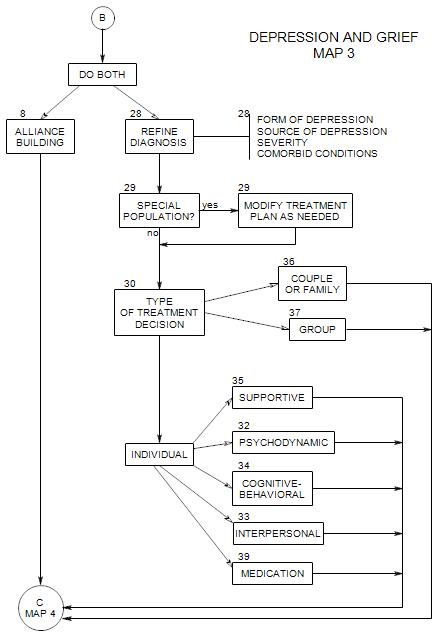
SECTIONS: 8 | 28 | 29 | 30 | 32 | 33 | 34 | 35 | 36 | 37 | 39
-
Follows Section 23 on Map 1 and Section 30 on Map 3
Supportive interventions of various kinds may be a part of any psychotherapy. It involves working with a person’s strengths, to help him/her cope more effectively with current issues.
It may be the treatment of choice for people who
- are in crisis
- have ego weaknesses that prevent them from engaging in fruitful self-examination.
Technically, it is a form of psychoanalytic psychotherapy that focuses on conscious thinking in the present, rather than examining conflicts, interpreting behavior, attempting personality change, looking for origins in the patient’s childhood, etc. Thus it also shares treatment goals and techniques with cognitive approaches.
35a. Treatment Goals
Generally, treatment goals are
- better functioning without depending on greater insight to achieve it.
- reduction of stress
Expressed in psychoanalytic terms, the goals can be broken down to include [Rockland, 74-80]
- Strengthened reality testing
- Improved regulation and control of drives
- Improved object relations
- Improved thinking
- Supporting adaptive defenses
- Reducing reliance on splitting and primitive defenses
- Undermining excessive superego
- Reduced environmental stress
35b. Techniques
The therapist [Rockland 17-20]
- is relatively active and real
- offers advice and personal values for enhanced self control
- suggests environmental changes
- focuses on reality
- does not interpret unconscious conflict
- discourages regression and free association
- encourages logic and rational thought
Specific techniques may include [Rockland,84-90]
- encouraging the therapeutic alliance
- giving reassurance and hope
- giving suggestions
- educating
- accepting emotional expression
- suggesting or making environmental changes
- setting limits
- giving praise
- clarifying and confronting
In addition, the therapist may provide…
- encouragement during setbacks and relapses
- information about medications, especially dealing with side effects and the urge to discontinue
- information about depression and the reasonableness of the patient’s experience
35c. Change of Treatment
You should watch for patient changes that indicate a need to modify the treatment.
A common change for an essentially intact patient in crisis is that as the crisis passes, the need for continued psychotherapy is lessened, and termination is a possibility.
Another possibility is that for a patient with ego deficits, as the patient is strengthened, his/her ability to make use of psychodynamic psychotherapy is greater, and you may move in that direction.
